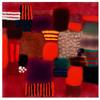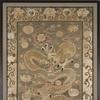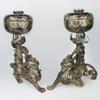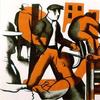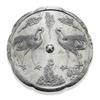Wende Museum Exhibitions 'War of Nerves' and 'Red Shoes' Present Cold War Material Cultural
- CULVER CITY, California
- /
- September 10, 2018
Two new exhibitions at the Wende Museum, in Culver City, Calif., illuminate how the Cold War was fought through psychology, science, and culture – while provoking compelling questions about how art, media, and even our own minds might be at play in the ideological battles of today. The War of Nerves: Psychological Landscapes of the Cold War, a collaboration with Wellcome Collection (London), and Red Shoes: Love, Politics, and Dance During the Cold War are on view September 16, 2018, to January 13, 2019.
The Cold War was in many ways a war of the mind. For forty years, as two superpowers struggled to impose their respective ideologies on the minds of the masses, they faced each other with fear, distrust, and nuclear brinkmanship. The “war of nerves” between East and West involved the promise of mutually assured destruction and an uneasy détente. The Cold War also took place on an individual level, as governments sought to influence their own and enemy populations, and experimented with controlling people’s minds through both science and pseudo-science. War of Nerves, a collaboration between the Wende Museum and Wellcome Collection (London), looks at the psychological landscapes of the East and the West through contemporary art and everyday artifacts from both sides of the Iron Curtain.
War of Nerves takes on the fear of atomic annihilation, the power of propaganda to stereotype an enemy, and the scientific mythology of brainwashing. The influence of the Cold War was everywhere, from the toys in children’s nurseries to atomic-bomb-themed beauty pageants.
Drawing on the collections of both museums, the exhibition illustrates the intersections between psychology, health, and the Cold War. War of Nerves includes contemporary artwork by Bruce Conner, Chris Wyrick, Suzanne Treister, Dunne and Raby, Sarah Anne Johnson, and Yevegniy Fiks.
Ballet was part of the high drama of the Cold War culture wars, as the US and the Soviet Union jockeyed for position. The Soviet Union produced some of the greatest dancers the world has ever known, with the Bolshoi and Kirov companies as standard bearers. But there were also painful losses, such as the defections of star dancers Rudolf Nureyev, Natalia Makarova, and Mikhail Baryshnikov, and the stifling of dance innovation during a time of great creativity in the West. Red Shoes: Love, Politics, and Dance During the Cold War is curated by psychologist and Wende Museum Board Member Thomas E. Backer, PhD.
Through posters, photographs, videos, and ephemera including performance programs and newspaper clippings, Red Shoes explores how the culture wars shaped American and Soviet ballet, with a focus on the personal stories of two couples who danced across Cold War borders. Kent Stowell, who performed with New York City Ballet in its historic 1962 USSR tour, and his wife, Francia Russell, who staged one of Balanchine’s works in the Soviet Union in 1988, are the co-founders of the world-renowned Pacific Northwest Ballet. Kirov soloist Ludmila Lopukhova left the Soviet Union for the United States (and stardom with San Francisco Ballet), after meeting and marrying Derek Hart, a British former dancer who directed the 1983 documentary Backstage at the Kirov. Their stories illuminate another side of the Cold War, one fought not with threats of nuclear war but with fierce competition for cultural dominance.
To view the schedule of free public programs, please visit wendemuseum.org.


